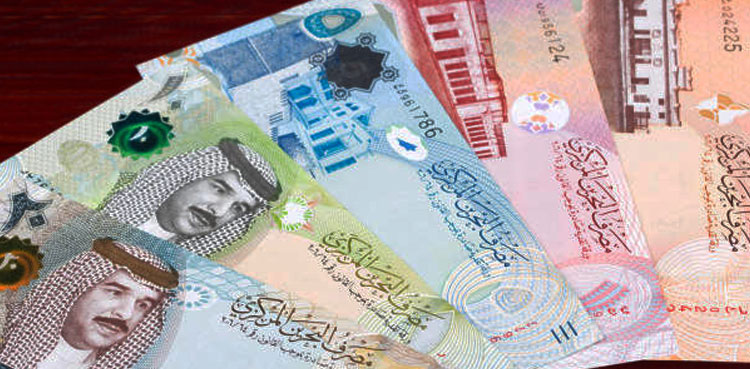Karachi/Manama- June 4: The current value of the Bahraini Dinar (BHD) stands at 744.79 Pakistani Rupees (PKR), reflecting a stable exchange rate as per the latest market information. This stability highlights a balance in the economic indicators of both currencies, offering insights into their valuations and the potential effects on trade and investment.
Factors Affecting Valuation
The Bahraini Dinar’s exchange rate against the Pakistani Rupee is affected by a variety of factors, including supply and demand dynamics in the foreign exchange market, the economic stability of each country, and the monetary policies enforced by Bahrain and Pakistan. The fixed rate of the Bahraini Dinar against the U.S. dollar at 0.376 BHD per USD is sustained by Bahrain’s robust oil-based economy and a reliable monetary system overseen by the Central Bank of Bahrain. This peg leads to minimal volatility against major currencies, thereby maintaining its value against the PKR.
Conversely, the Pakistani Rupee operates under a managed floating exchange rate system, which is influenced by the State Bank of Pakistan’s interventions, inflation levels, and foreign exchange reserves. Pakistan’s economy is heavily reliant on remittances, textile exports, and foreign loans, making it more vulnerable to fluctuations. The current exchange rate of 744.79 PKR/BHD reflects a balance in trading activities and provides short-term confidence to investors, despite the economic challenges Pakistan faces, which include inflation and external debt issues.
Economic Implications
The set exchange rate significantly impacts the economies of both nations. A stable BHD-PKR exchange rate for Bahrain encourages predictable import costs, particularly for goods sourced from Pakistan, such as textiles and agricultural products. This reliability boosts the confidence of Bahraini investors and benefits Pakistani companies that attract Bahraini investments, thus mitigating the currency risk associated with global investments.
For Pakistan, a consistent rate guarantees that its imports from Bahrain, crucial for the banking and energy sectors—like petroleum and financial services—remain economically viable. Furthermore, remittances from Pakistani nationals working in Bahrain, a vital source of foreign currency, are less susceptible to exchange rate fluctuations, ensuring a steady inflow for Pakistani consumers and the broader economy.
Nevertheless, the exchange rate between the Bahraini Dinar and the PKR highlights the disparities in purchasing power. One BHD corresponds to a considerable quantity of PKR, which could amplify pressure on Pakistan’s import costs and trade equilibrium should the PKR weaken in the future. On the flip side, this scenario could enhance the competitiveness of Pakistani labor and products in Bahrain, potentially boosting export volumes and remittance inflows.
Currency Overview
The Bahraini Dinar (BHD) was introduced in 1965 as the official currency of the Kingdom of Bahrain, replacing the Gulf Rupee. It is abbreviated as “BD” or “ب.د”, and is subdivided into 1,000 fils. The BHD is considered one of the strongest currencies globally, supported by Bahrain’s oil wealth and sound economic policies.
The Pakistani Rupee (PKR), which started circulating in 1948, is the currency of Pakistan, succeeding the Indian Rupee. It is denoted by the symbol “₨” or “Rs” and is divided into 100 paisa. The value of the PKR is influenced by Pakistan’s diverse economy, encompassing agriculture, manufacturing, and services, in addition to global commodity rates and financial backing from the IMF.


Leave a Comment